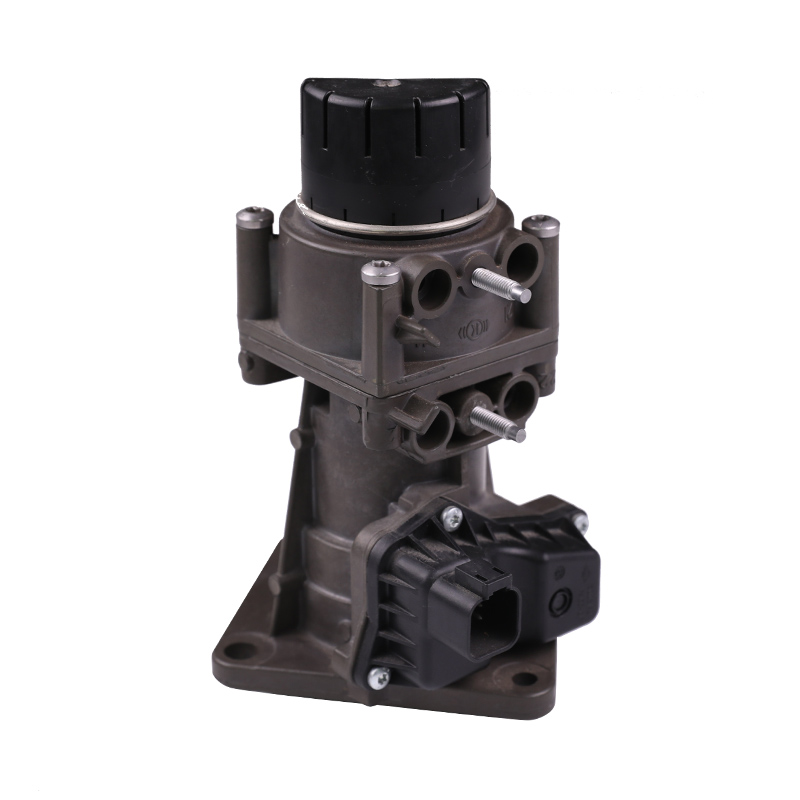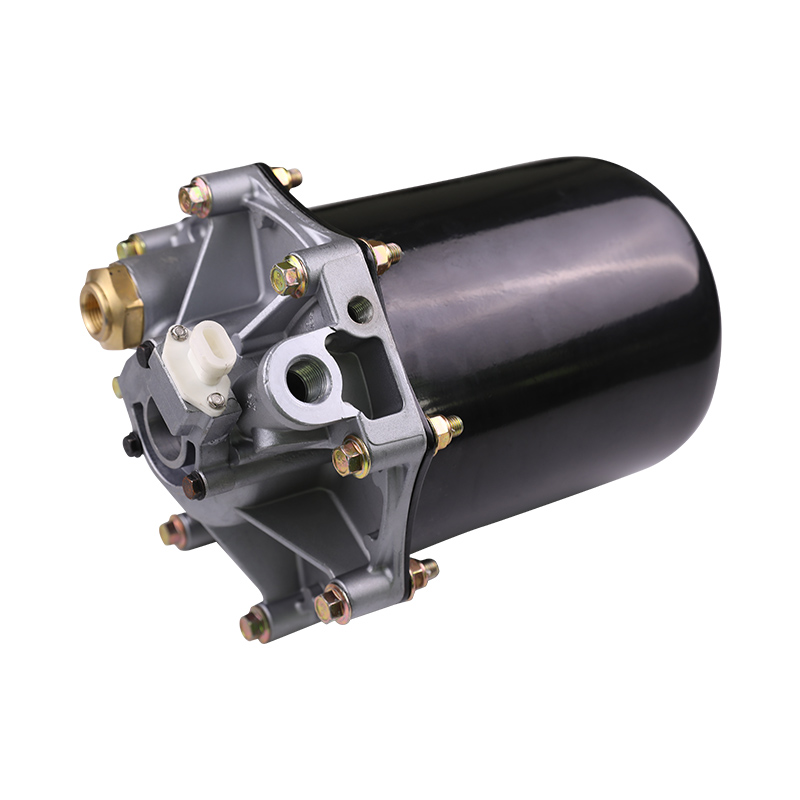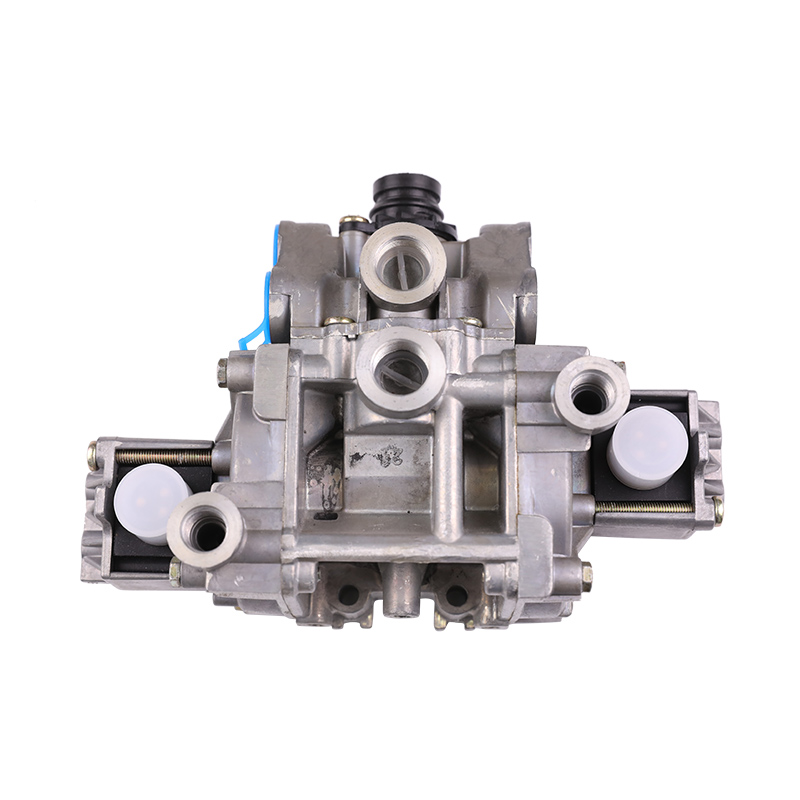The parking brake valve plays a crucial role in the complex pneumatic braking system of commercial vehicles. However, many people are unaware that the parking brake valves on tractors and trailers differ significantly in function, design, and integration. These differences are not accidental; they are designed to ensure safe, reliable, and efficient braking for the entire vehicle combination (tractor and trailer).
Function and Role: Control Center vs. Actuator
The tractor's parking brake valve, also known as the parking brake valve or emergency brake control valve, is the "brains" and "control center" of the entire braking system. Its core function is to control the parking brake of the tractor and the emergency brake of the trailer. The driver operates this valve to control the air pressure, thereby inflating (releasing the parking brake) and venting (applying the parking brake) the tractor's spring brake chamber. More importantly, it is closely linked to the tractor protection valve. In the event of an unexpected trailer detachment or an air pressure leak, it can automatically or manually shut off the air supply and trigger the trailer's emergency brake. The trailer parking brake valve, on the other hand, is a relatively simple "actuator terminal" or "control unit." It is often referred to as a trailer brake valve or trailer emergency brake valve. Its primary function is to provide independent parking brake control for the trailer. When the trailer is separated from the tractor, operating this valve allows the trailer to independently park. It typically operates by directly controlling the inflation and deflating of the trailer's spring brake chambers. It lacks complex linkages, and its scope of operation is limited to the trailer itself.
Design and Structural Differences: Complex Integration vs. Simple Independent
The design of a tractor parking brake valve is more complex. It typically serves a dual function:
Parking brake function: Controls the tractor's parking brake.
Trailer emergency brake function: Controls the air supply to the trailer.
This valve typically incorporates multiple pistons, springs, and air passages to control and switch multiple air pressures. For example, it typically has two main air inlets (from two separate air tanks), two air outlets (one for each of the tractor's parking chambers), and a port for controlling the trailer's air supply. A typical external feature is the push-pull handle ("pull to park, push to release"). When the handle is pulled, the tractor's parking air chamber is vented and the trailer's air supply line is simultaneously vented, triggering the trailer's emergency brake.
The trailer's parking brake valve is relatively simple and straightforward in design. It is typically a single-function valve used solely to control the trailer's parking brake. Its internal structure primarily consists of a piston or slide valve that connects and disconnects the trailer's spring brake air chamber from the atmosphere. When the valve is pulled out, the chamber is vented, applying the spring brake; when pushed in, the chamber is inflated, releasing the brake. It does not require linkage with a tow protection valve or other complex valves, resulting in a more compact design and fewer air passages.
Air Connections and System Integration: Hub vs. Branch
The tractor's parking brake valve serves as the air hub of the entire tractor-trailer brake system. It connects directly to the tractor's two main air tanks, the tractor's own parking brake chamber, and the trailer's air supply line (emergency line). All air pressure from the tractor must pass through this valve before entering the trailer. When the valve is in the "Park" position, it shuts off the air supply to the trailer and vents the air supply line, forcing the trailer to apply the emergency brake. This is a critical safety mechanism.
The trailer parking brake valve is a branch air circuit. It is connected only to the trailer's own air tank (usually the trailer's air tank) and the trailer's spring brake chamber. It does not directly control the air supply from the tractor, nor is it linked to other complex safety valves. Its purpose is to provide an independent parking interface after the trailer is separated from the tractor, making it easier for the driver or maintenance personnel to operate the vehicle.
Safety and Emergency Functions: Linked Protection vs. Independent Operation
The core safety function of the tractor's parking brake valve is its linked protection capability. During normal driving, it continuously supplies air to the trailer, keeping its parking brake disengaged. In the event of an emergency, such as an accidental disconnection of the trailer's air supply line, the pressure change within the valve immediately triggers the valve to automatically vent air, applying the trailer's emergency brake and preventing loss of control. It also allows the driver to manually operate the brake from the cab, or remotely control the trailer's parking.
The trailer parking brake's core safety feature is its independent operation. When parking, repairing, or loading or unloading, it ensures the trailer can be parked independently and reliably, without relying on the towing vehicle. It lacks complex linkage protection features, and its operation does not affect the towing vehicle's braking system. In an emergency, its purpose is to prevent the trailer from rolling away from the towing vehicle, not to provide emergency braking protection while the trailer is in motion.






